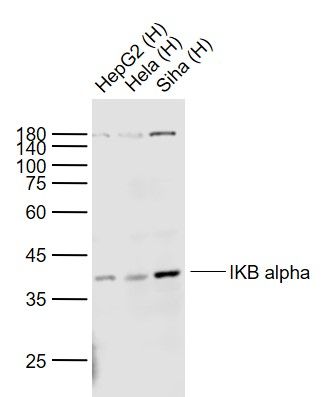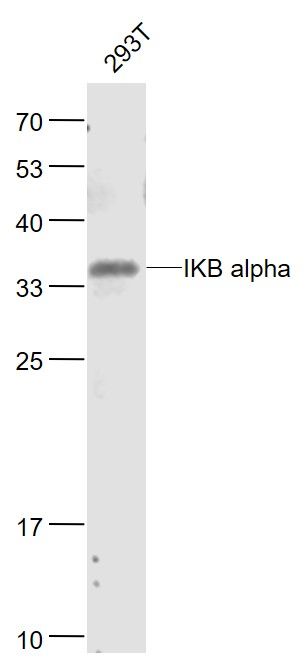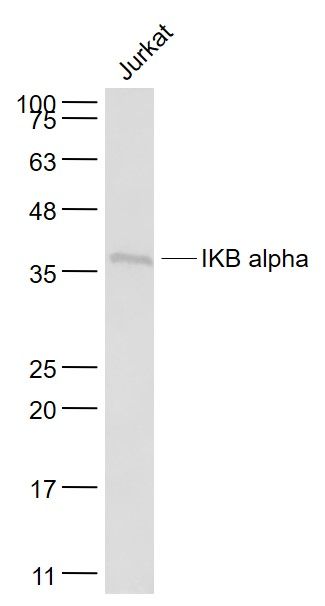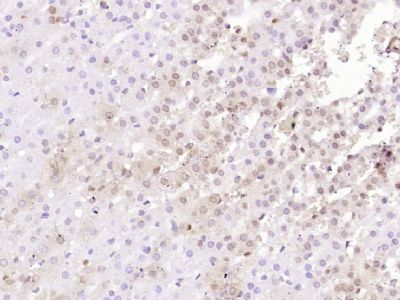Sample:
Lane 1: HepG2 (Human) Cell Lysate at 30 ug
Lane 2: Hela (Human) Cell Lysate at 30 ug
Lane 3: Siha (Human) Cell Lysate at 30 ug
Primary: Anti-IKB alpha (SLM33441M) at 1/1000 dilution
Secondary: IRDye800CW Goat Anti-Mouse IgG at 1/20000 dilution
Predicted band size: 39 kD
Observed band size: 39 kD
Sample:
293T(Human) Cell Lysate at 30 ug
Primary: Anti- IKB alpha (SLM33441M) at 1/1000 dilution
Secondary: IRDye800CW Goat Anti-Mouse IgG at 1/20000 dilution
Predicted band size: 36 kD
Observed band size: 36 kD
Sample:
Jurkat(Human) Cell Lysate at 30 ug
Primary: Anti- IKB alpha (SLM33441M) at 1/1000 dilution
Secondary: IRDye800CW Goat Anti-Mouse IgG at 1/20000 dilution
Predicted band size: 36 kD
Observed band size: 36 kD
Paraformaldehyde-fixed, paraffin embedded (Rat adrenal gland); Antigen retrieval by boiling in sodium citrate buffer (pH6.0) for 15min; Block endogenous peroxidase by 3% hydrogen peroxide for 20 minutes; Blocking buffer (normal goat serum) at 37°C for 30min; Antibody incubation with (IKB alpha) Monoclonal Antibody, Unconjugated (SLM33441M) at 1:800 overnight at 4°C, followed by operating according to SP Kit(Mouse) (sp-0024) instructions and DAB staining.
|



